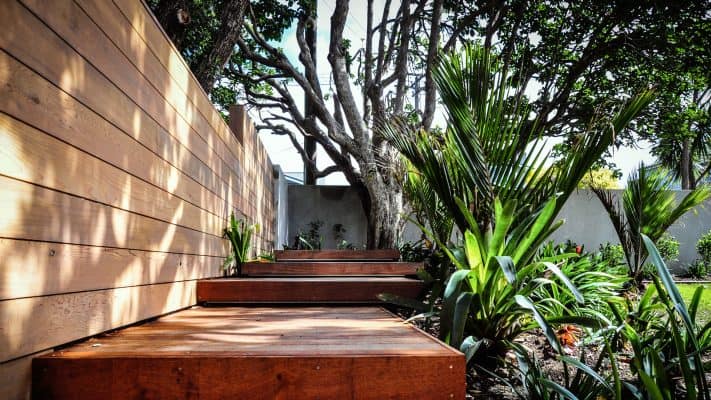Being involved in numerous design and build projects there are some consistent themes to the projects which succeed on all fronts and ensure happy clients and great design. Whilst I focus on landscape projects large and small, these can also apply to any type of building project, interior or exterior.
Forming a design brief
Before you engage a landscape designer or landscape architect it is useful to consider what you are want to achieve with your landscaping and what the current and preferred use of your garden is.

Are there longer term plans are for it, for an example is the property a first home, a home for a growing family, a forever home, a do-up for rental? Are you planning future renovations to the house that should be allowed for in the garden? This makes a huge difference to the scope of work, budget considerations and staging of work. In terms of the site conditions – where is the sun (in winter and summer), the prevailing wind, the views that you just don’t want, and those that could be enhanced? Which doors do you use and how do you currently access and circulate around the property? Where are the bedrooms, if these need to be quieter zones? Do you enjoy entertaining outside and if so, how many people are you typically hosting? Do you use your garden at night, in which case outdoor lighting is important? Clothesline vs. dryer and where you put your wheelie bins might be a bit boring, but need to be considered.
Using these insights, make a wish list for your project, one that reflects all the occupants and users of the property and will ultimately form part of the design brief for your designer. Then break this down into the ‘must haves’ versus the ‘nice to haves’. If you are a Pinterest or Houzz user – create an online board or idea-book with images from projects you’d like to show to prospective designers along with your wish list – this is effectively your design brief. You can either write this up yourself or have the designer prepare a reverse brief based on the information provided. Then make sure the brief is agreed, understood and documented in any contract.
Choosing the right designer/ architect
Great projects need a great relationship between the client, the design team and ultimately the tradespeople. It is important to do your research before engaging a designer, try to view previous projects and get references from other clients you can speak to. If you don’t know where to start or don’t have a recommendation you can search Houzz or one the websites of professional bodies (www.nzila.co.nz; www.lianz.co.nz) for designers in your area that come with accreditations and references.
Carefully look at the style and finishing of their work. Is this consistent with the style and look you are after? Some designers really do have a distinct style that comes through in all their work, others are more flexible.
Communication is key. Being able to have honest, open and constructive conversations with your designer is critical to success and a smooth process. Don’t be afraid to ask questions or make suggestions. You know your property better than anyone else, you will have to live there (and pay for it!), so best to be happy and confident in the design decisions being made. A good designer will be very open to this and happy to have your perspective to get a more robust design solution.
Budget
Work out what your budget is before you start the design process. Your landscape designer should be able to guide you on what is realistic based on your brief or whether you need to prioritise some items. Always ensure you have some contingency in your budget, ideally about 15% – you will need it. There are always surprises and budget blowouts are extremely stressful for all concerned.
Understanding the design
Maybe a no-brainer, but given our busy lives, it is sometimes easy to miss some of the smaller design details shown on plans. Make sure you take the time to review the details and don’t rush decision making. Your designer should also ensure you fully understand what you are getting and have various tools to depict their design to you. 3D imagery and models are particularly helpful, as are material samples, photos and materials palettes to give the overall look and feel of a design. Good drawings need to be able to clearly convey to you as the client, as well as the tradespeople, what the design is.
Coordination
Ensure all of the design team/consultants are coordinated either via you or between themselves – clear responsibilities, timeframes and deliverables so nothing slips through the gaps. The same for the tradespeople implementing the project. Who is their key point of contact and how do they coordinate with other trades? Who do they go to with questions and what is the signoff process for any site changes? Effective, clear communication channels ensure the design is adhered to as well as creating efficiencies in the construction and avoidance of costly rework through poor coordination.

Article contributed by: Louise Dunning
Director of Noble Fox
For inspiration and ideas visit www.noblefox.co.nz/ or check them out on Instagram @noble.fox
